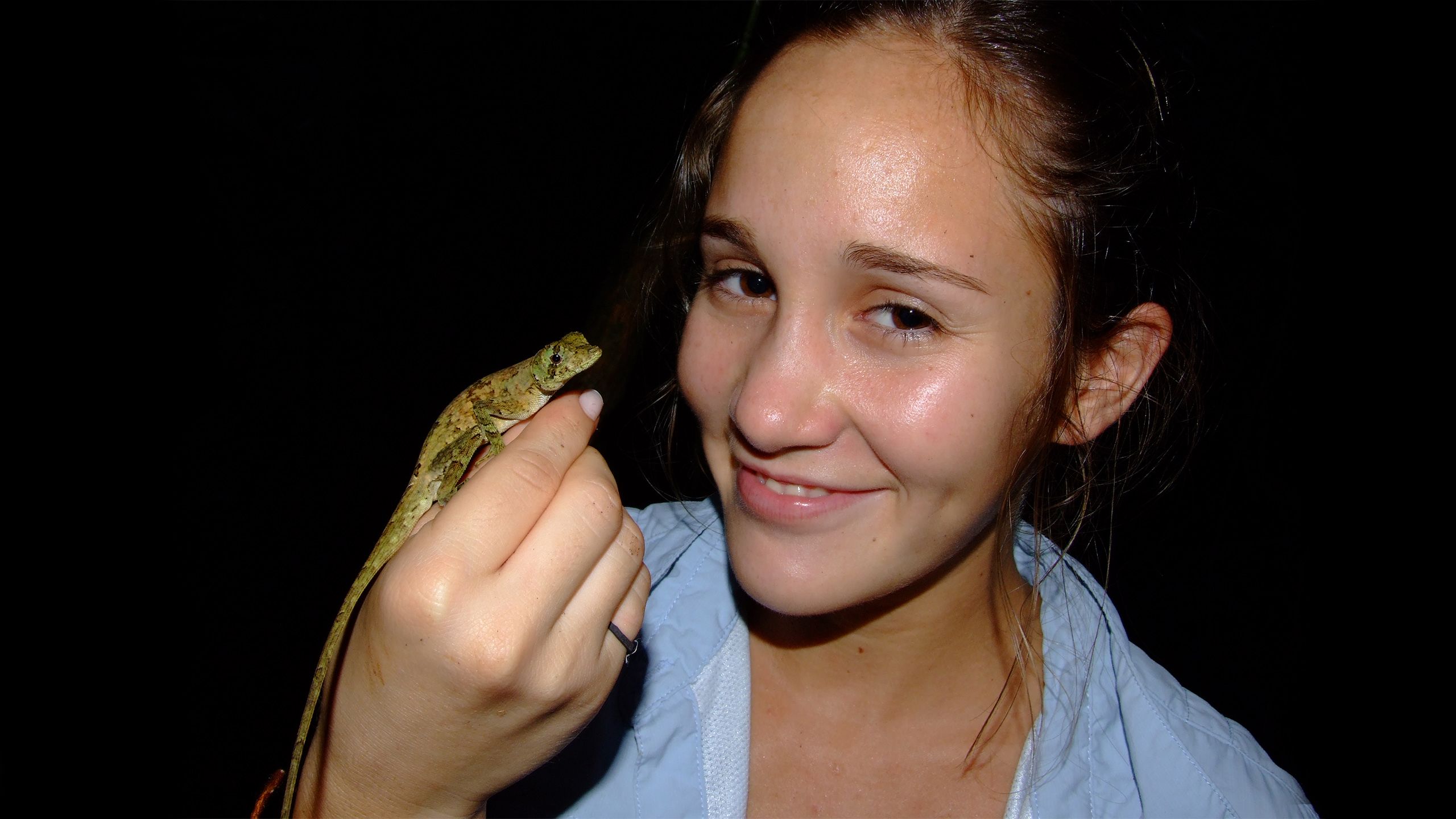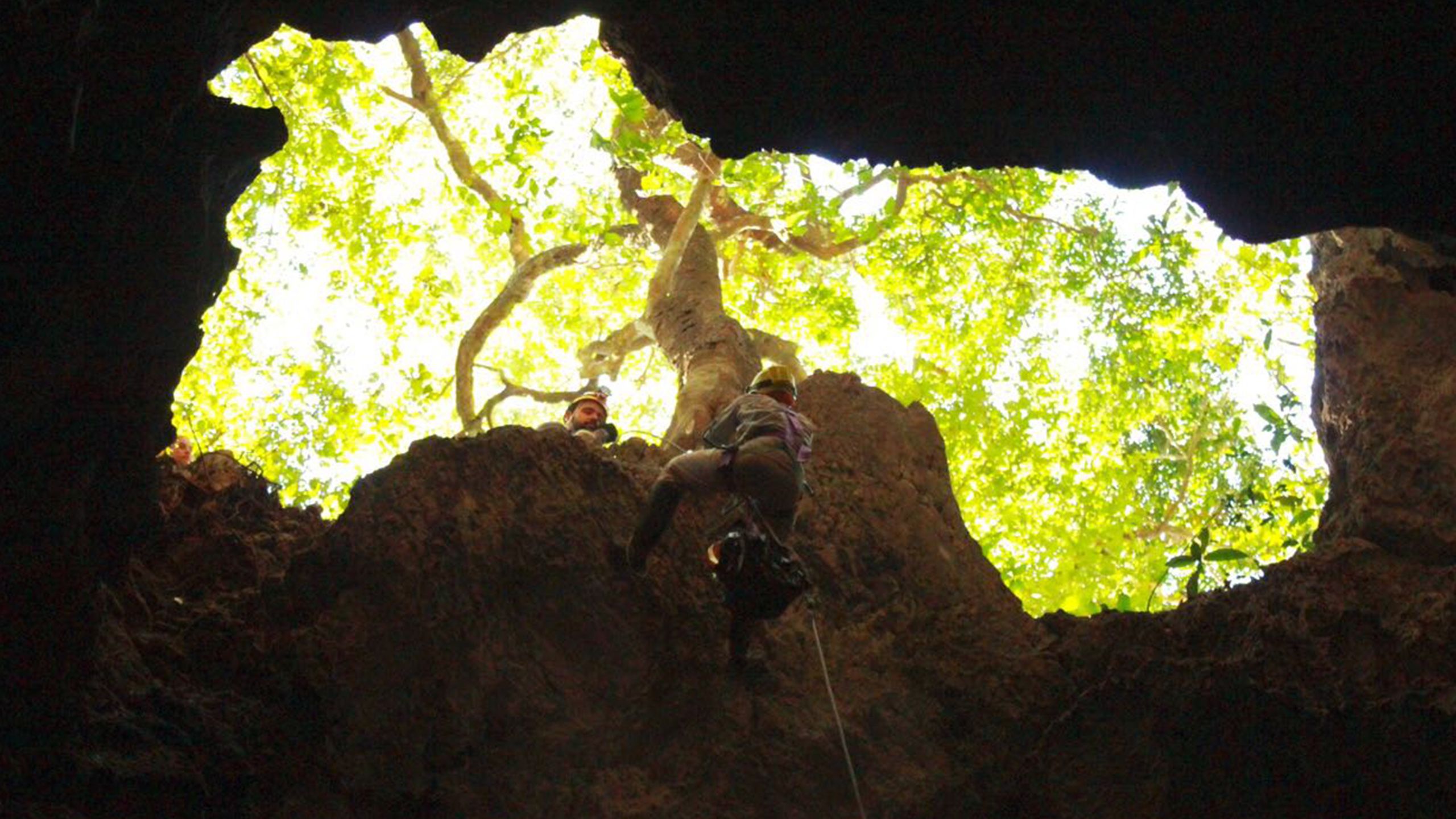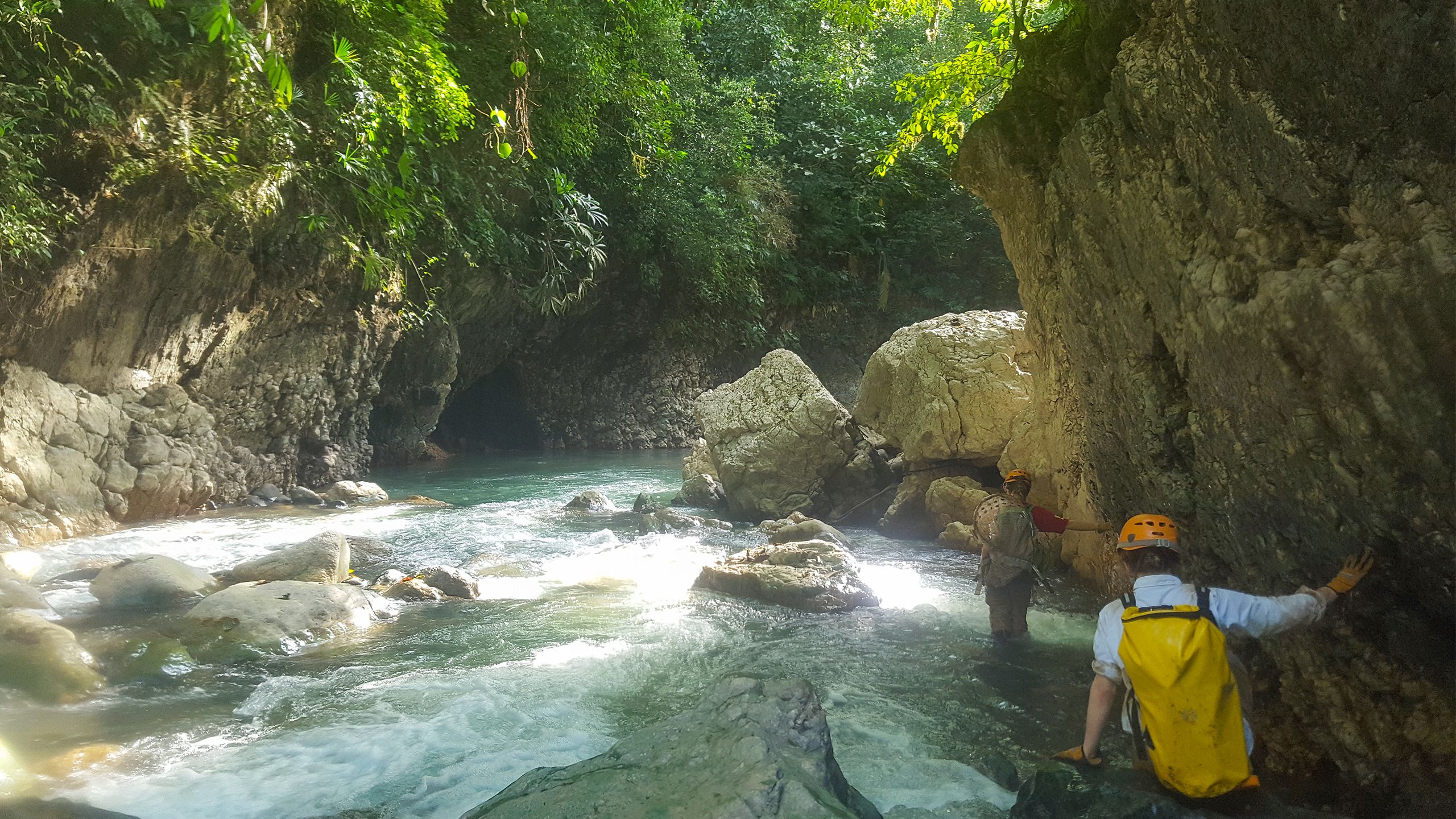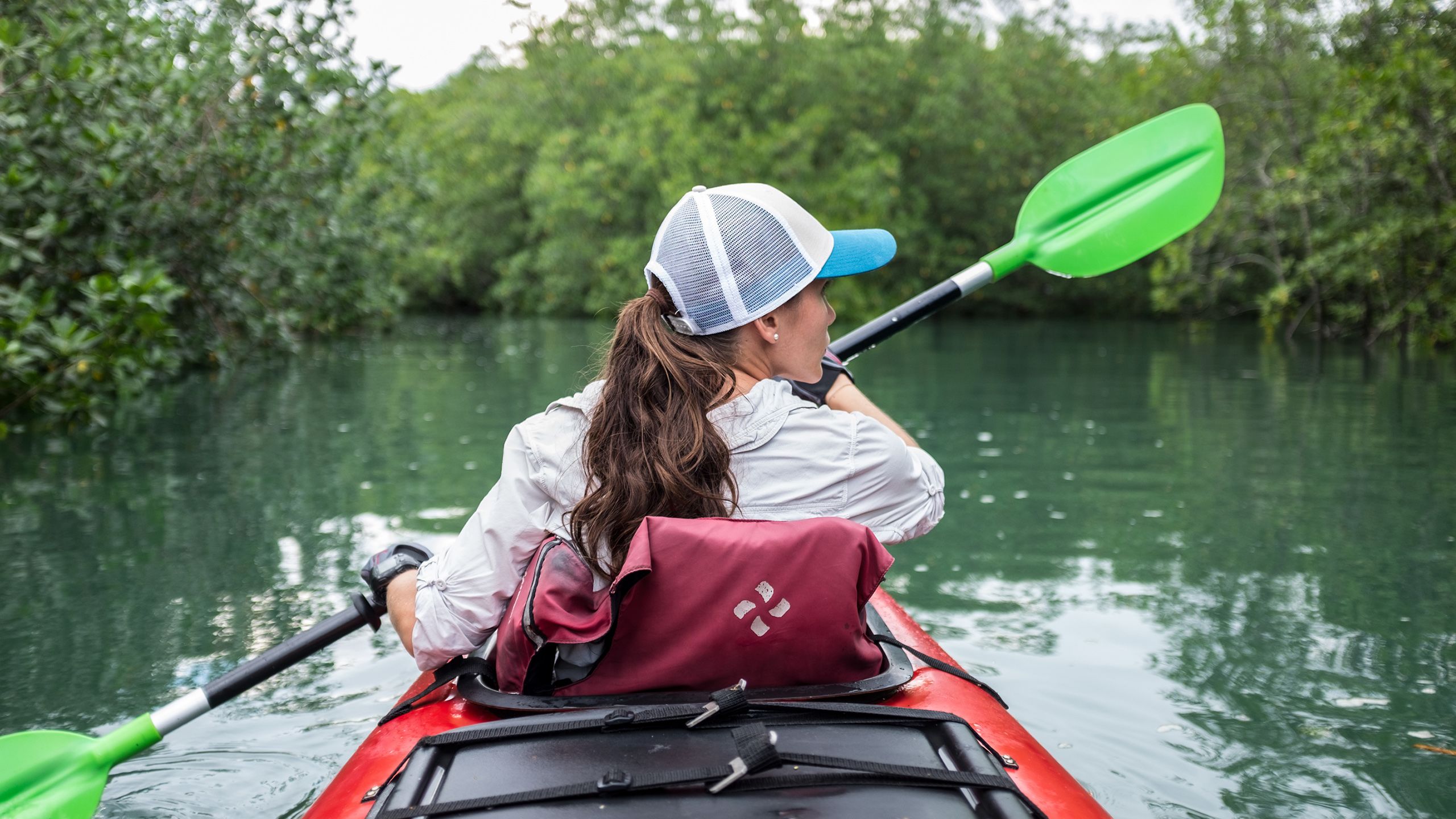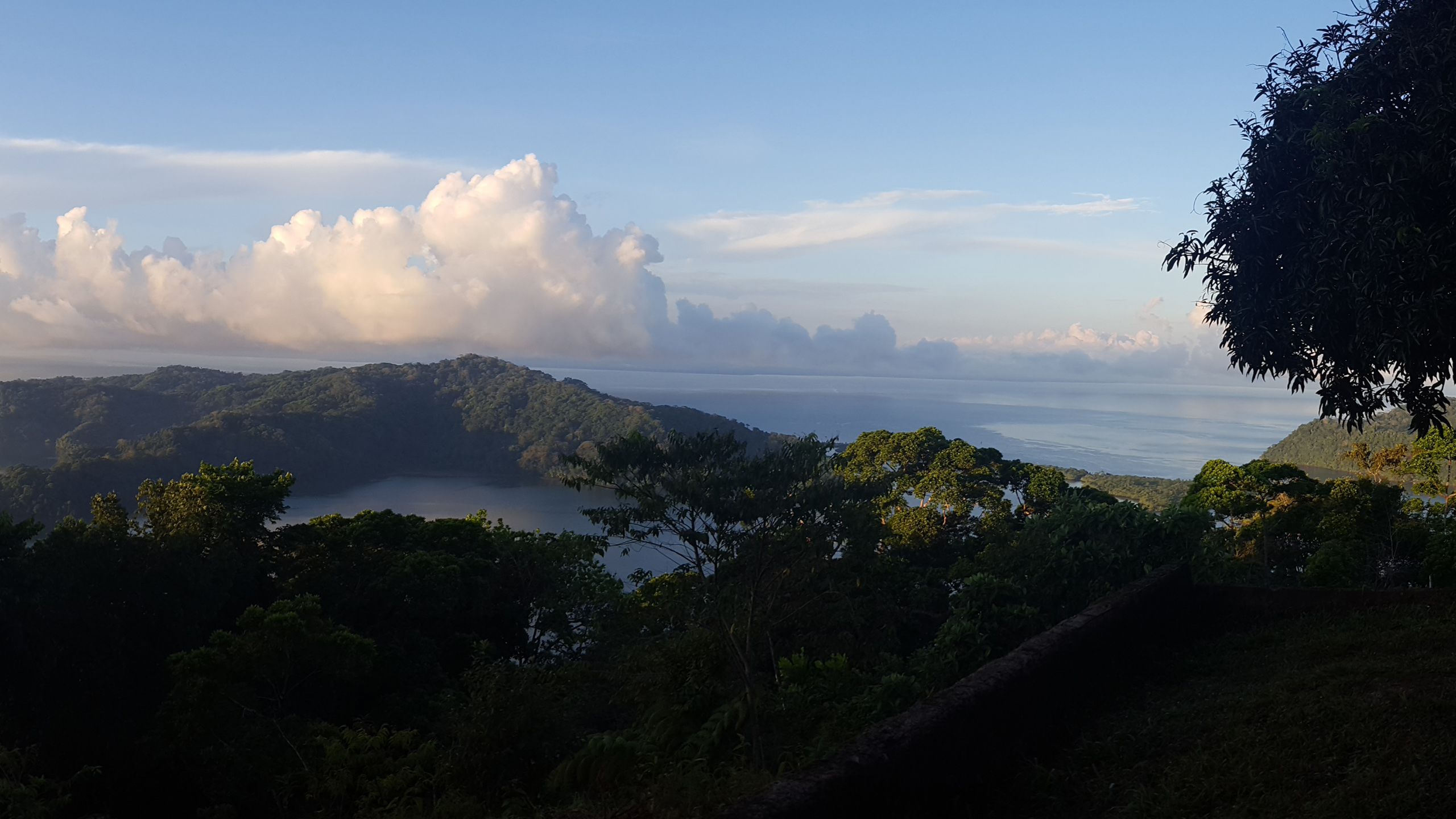I AM AN EMORY RESEARCHER

I AM
AN EMORY
RESEARCHER

The next pandemic could be averted if we better understand why viruses spill over from wildlife to humans. Emory researcher Amanda Vicente-Santos is looking at bats for answers.
Amanda Vicente-Santos knew her calling even before she could name it. Growing up in a small Costa Rican port town, she had her pick of the Pacific Ocean and rainforest as playgrounds. She swam in waters with humpback whales and bottlenose dolphins and learned to blend in with an astonishing array of birds and animals in the jungle that towered behind her home. So her pursuit of a future in ecology came as no surprise. Less expected was how vital her area of research would become because of COVID-19.
A doctoral candidate at Emory's Laney Graduate School, Vicente-Santos is a disease ecologist studying the immune systems of bats. Bats inevitably figure in the discussion of any disease outbreak and COVID-19 is no exception, with some researchers pointing to the world’s only flying mammal as the origin species for the virus. While that theory gains ground, Vicente-Santos is examining the other side of that equation: Understanding the impact of people on bats and how their immune systems respond to human incursion on their homes. She is looking at stress markers on cave-dwelling bats in Costa Rica that will help predict a “spillover” event — the moment when a pathogen jumps from one species to another, eventually ending up in a person who can then infect others.
“I am trying to understand how humans are changing the rules of nature, forcing animals to adapt to these changes, and what it means for our own health.”
— Amanda Vicente-Santos, Emory doctoral student and conservation biologist
Bats make for perfect study animals because they are not confined to one region, says Vicente-Santos. “They exist in such diverse environments, which presents a great opportunity to assess how our encroachment into wildlife refuges is hurting them and us.” She is particularly in awe of the immune system of bats, especially how it has evolved to help them fly. Bats can also live up to 40 years in the wild, unusually long for such small mammals. “This is why researchers are intrigued by the immunology of bats. There could be many lessons there for us.”
“The only attribute that 1,400-plus bat species have in common is that they modified their hands to be wings.”
Vicente-Santos says she chose Emory because she found the ideal advisor — associate professor of environmental sciences Thomas Gillespie — an expert on zoonotic diseases recognized for his integrative approach to the conservation of biodiversity and mitigation of emerging infectious diseases. Gillespie was among the first scientists to demonstrate that human impact on the environment can alter the dynamics of natural pathogens in wildlife and create opportunities for pathogens to jump between species. Vicente-Santos’ doctoral work has been a centerpiece of applying this “One Health” approach in her native Costa Rica.
Gillespie says Vicente-Santos’ dissertation addresses a critical gap in our understanding of how human disturbance of ecosystems alters disease risk. “We desperately need well-designed empirical studies that integrate animal health surveillance complemented by detailed ecological data on natural and anthropogenic systems, and that is the core of Amanda’s research thesis.”
”The idea that all bats harbor dangerous pathogens is a big mistake. We must stop treating bats as public-enemy number one.”
Vicente-Santos came to Atlanta as a Fulbright scholar and when that funding ended, Emory stepped in to provide financial assistance. Emory is among the top institutions for the number of research training grants awarded to students, and Vicente-Santos has put her grant-writing training to good use by winning a slew of small awards.
She is paying it forward: she has taken small groups of undergraduate female Emory students on research trips to Costa Rica to stimulate interest in science and upend myths about bats. Vicente-Santos says while research in Costa Rica is under-resourced, it remains a budding scientist’s dream environment. “The forest and the ocean are living research laboratories and something you cannot build.”
